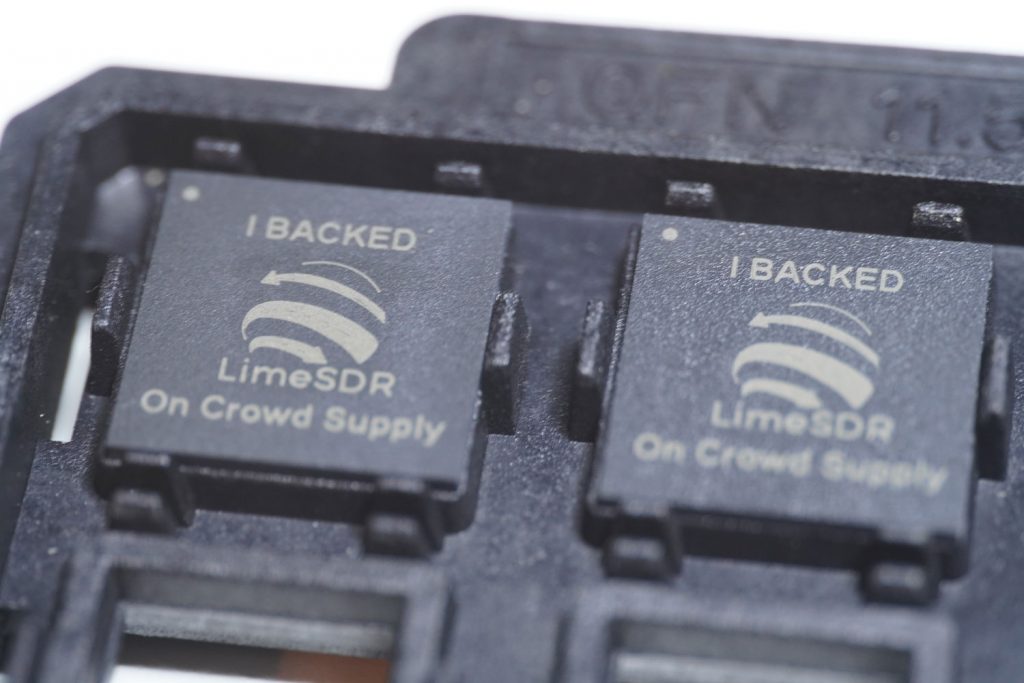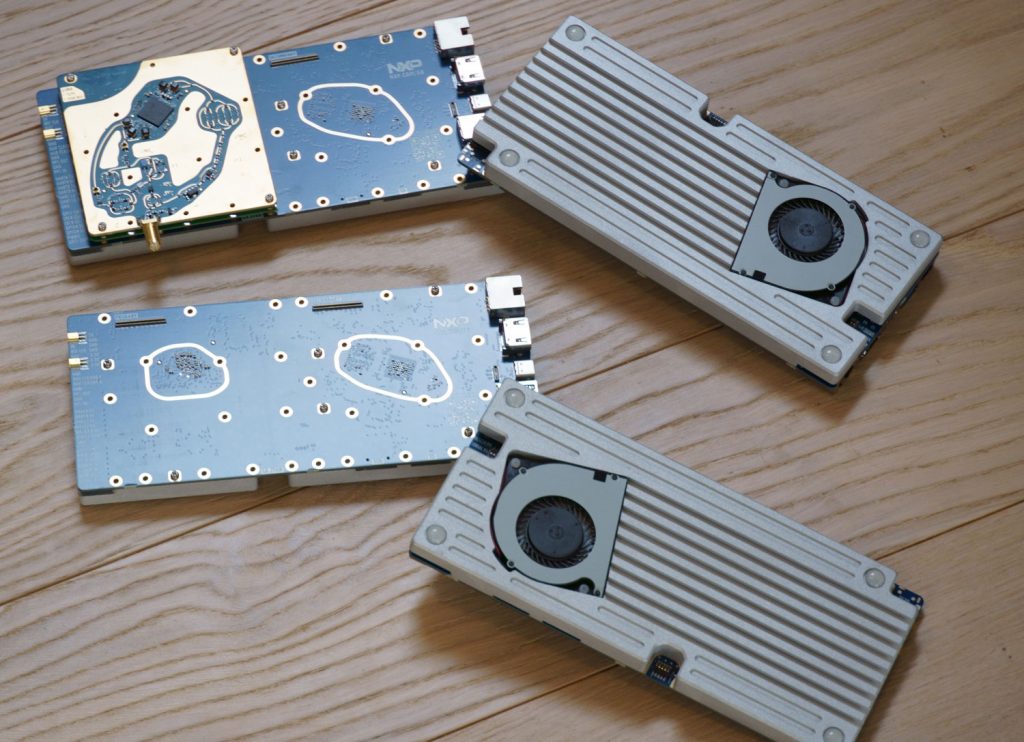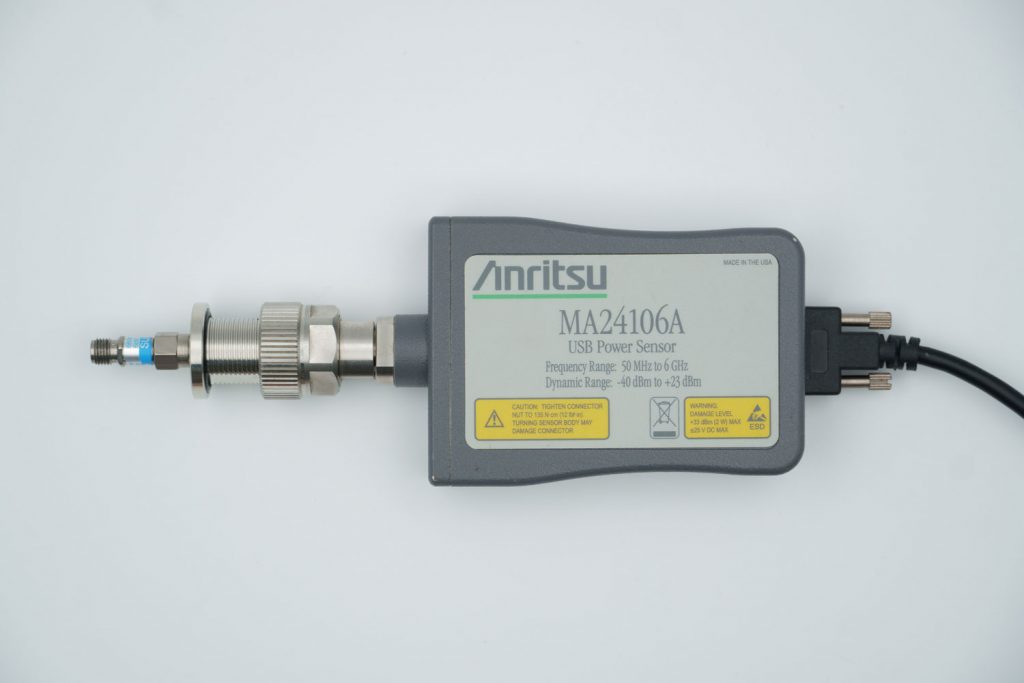Welcome to the EOD (End of December) update! It can be summed up with a single word: March (or April for Granita). Here is what happened over the last couple of months:
Motherboard
Motherboard Rev2 has a few improvements:
- NanoSIM card slot, on top of the SN220E embedded SIM (which we discovered is also on the iPhone 15!).
- A buck-boost converter as the main regulator, allowing us to work with poorly regulated USB voltages below 5V, on top of USB power delivery.
- New internal power distribution design optimized to decrease LDO losses for the Si5510 and LA9310.
- Input buffer for external clock reference signals to the Si5510.
- External LA9310 UART interface level shifted to 3.3V from 1.8V.
Motherboard Rev3, which will go into production without any further testing, will have another few improvements:
- Redesigned power supply input switching circuit, that should allow power inputs to be hot-swappable.
- Make-shift buck converter to regulate the new heatsink fan voltage/noise to well below audible levels.
Spot the differences:

Lime
The Lime board is performing well in the 10-3500 MHz range. The frontend is ok, the chip itself is very well characterized, and we now have enough of them in stock to cover the first batch deliveries. A handful of the chips we got might have been from a different age, but they worked well.
Like the motherboard, the Lime board is also ready for manufacturing.

Granita
We have made good progress on the Granita board, thanks to great support from ArcticSemi. As we are pushing them to see what their silicon can do, it’s taking a bit longer than we’d hoped and we are delaying our estimated delivery for Granita to April.
This delay assumes we can get everything finally settled on the Granita RFIC in January. The biggest problem at the moment is the lack of a low pass filter at baseband. It’s there, inside the RFIC, but our software can’t seem to enable it. It’s possible that the filter is disabled because of linearity problems, which would make QEC calibration very difficult, so we will need to wait and see.
Most of the frequency coverage issues have been solved, and the RFIC can now tune all the way up to 6.3 GHz. Some gaps remain, the biggest around the 1.5 GHz GPS range.
Here is a visualization of the progress on the LO tuning range on various software releases over time (frequencies below 600 MHz are covered by the RFFC2071 and the blue line, the latest release, is showing an almost complete coverage):

Breakout
We fully redesigned the breakout board, which will ship to our backers for less than it costs us to make it. It should make playing with the LA9310 fun and easy, as the input/outputs are now single-ended SMAs.
Heatsink
The new heatsink revision adds a fan and ~250 grams of weight. We are not very happy about the extra weight, but the fan is a great addition. It is perfectly impossible to hear, facing towards the table, and will help with temperature stability.

QEC
We have a first Quadrature Error Correction kernel running inside VSPA, and the results are great, as we measured 46 dBs of rejection on the Granita board. A newer kernel we are testing can compensate for phase errors linear in frequency as well, which should improve results even more.
Unfortunately compensating for phase or magnitude errors that are not constant requires a lot of processing power, so we need to ensure the analog baseband filters we are using have a flat response.

RFNM Interface
We future-proofed the interface, by replacing the LVDS data pair with a second I/Q transmit pair, along with a third single-ended clock and other minor signal-integrity related changes.
Factory Calibration
We made a first draft of a plan for shipping calibrated daughterboards, which should be a first in the world of inexpensive SDRs. The idea is to use a calibrated power sensor to measure the transmitted power of the daughterboards across different filters, amplifier settings, RFIC gains and of course, frequencies. Then, using the loopback path inside the RF daughterboards, reference that to received signals as well.
This saves on complications like having an external signal generator and simplifies the calibration setup and time, as it’s a single connection with the correct software.

Timeline
If Motherboard, Breakout board and Lime are ready, why March? It’s a simple estimation: it’s going to take all of January to make the PCBs, most of February to assemble them, and then March to test, calibrate and ship the boards. Motherboard Rev2 was manufactured at an almost record speed of 45 days including bringup and shipping, but that doesn’t apply here.
Comments
One response to “EOD update”
[…] the RFNM team posted their End of December update, noting that they are currently testing revision 2 of their motherboard with revision 3 to be the […]